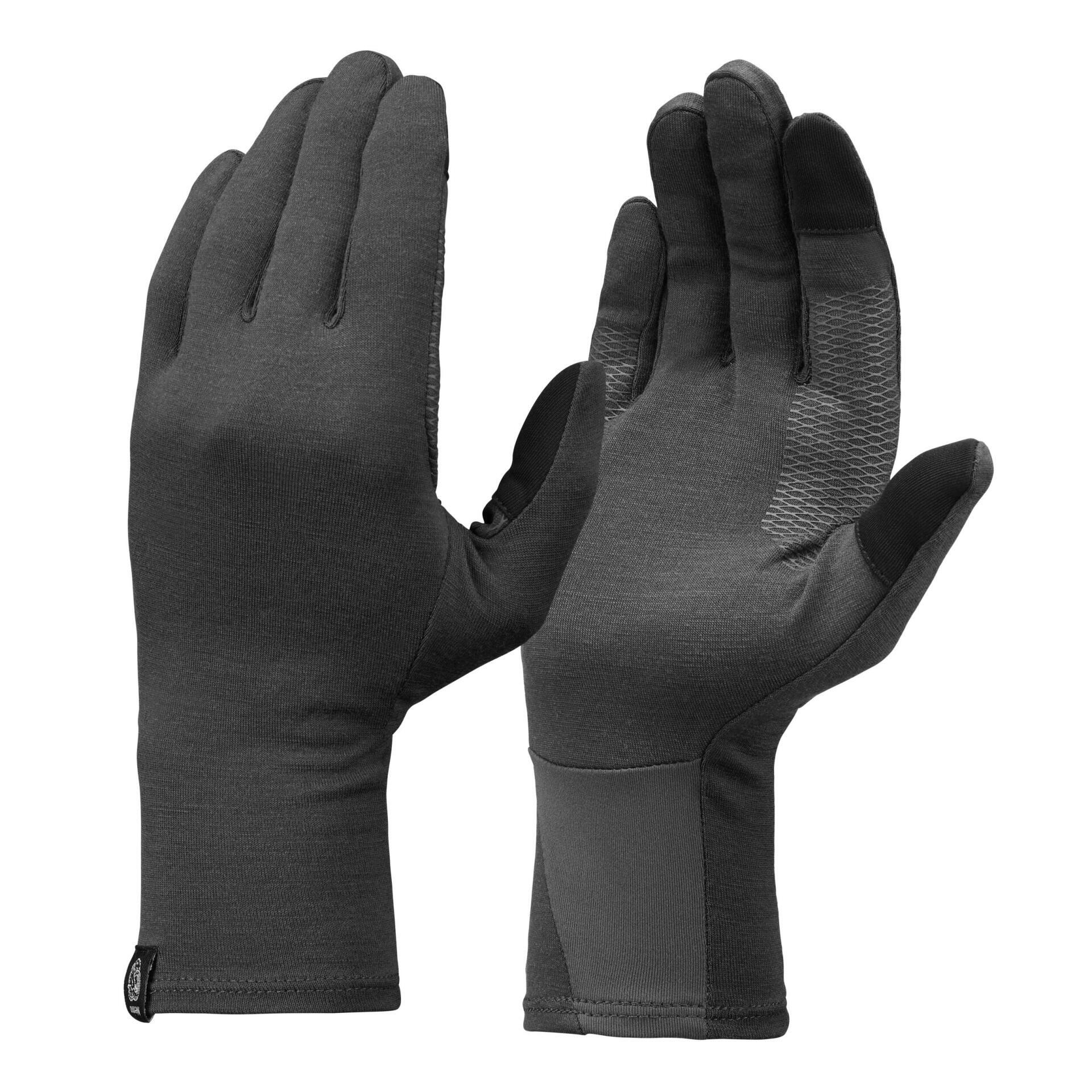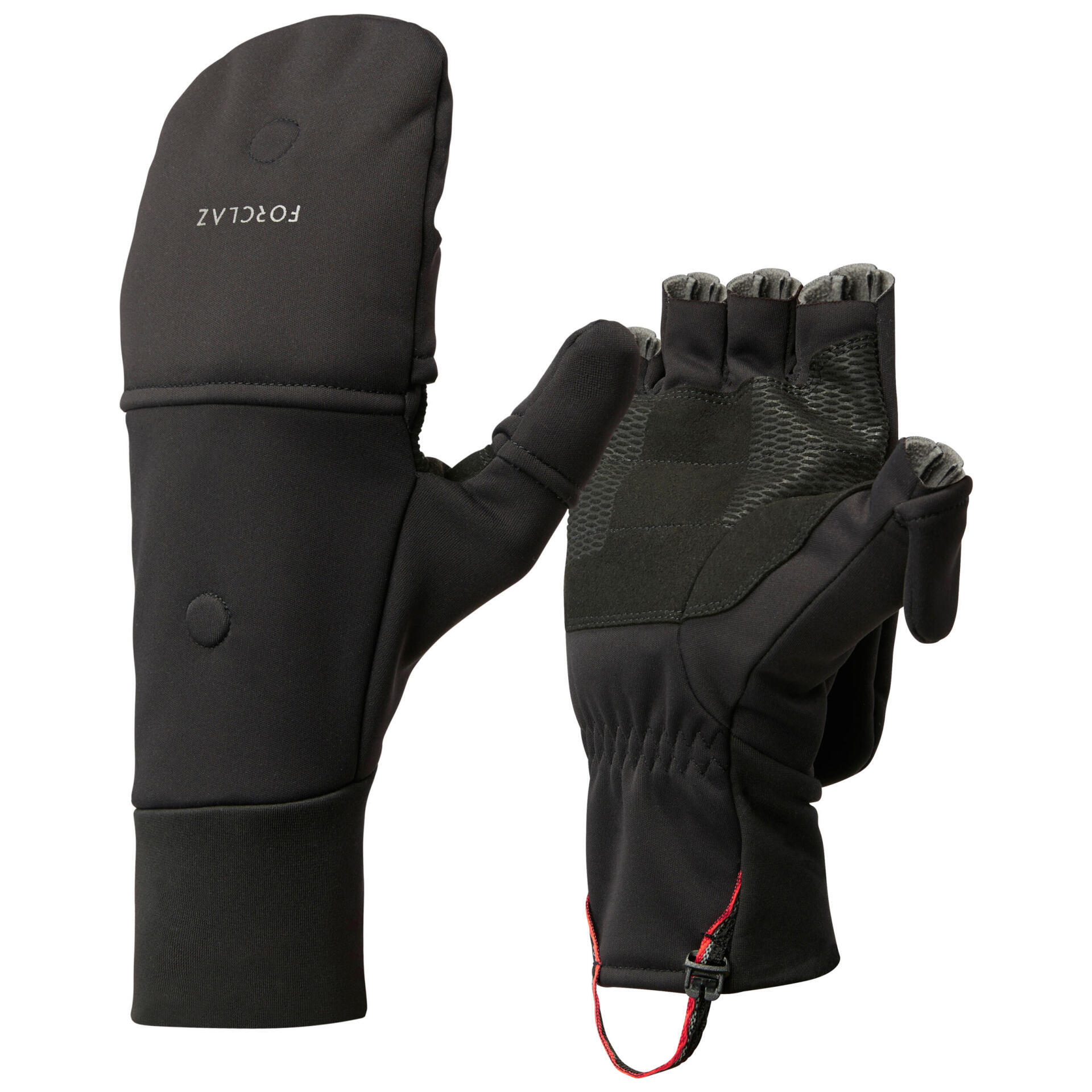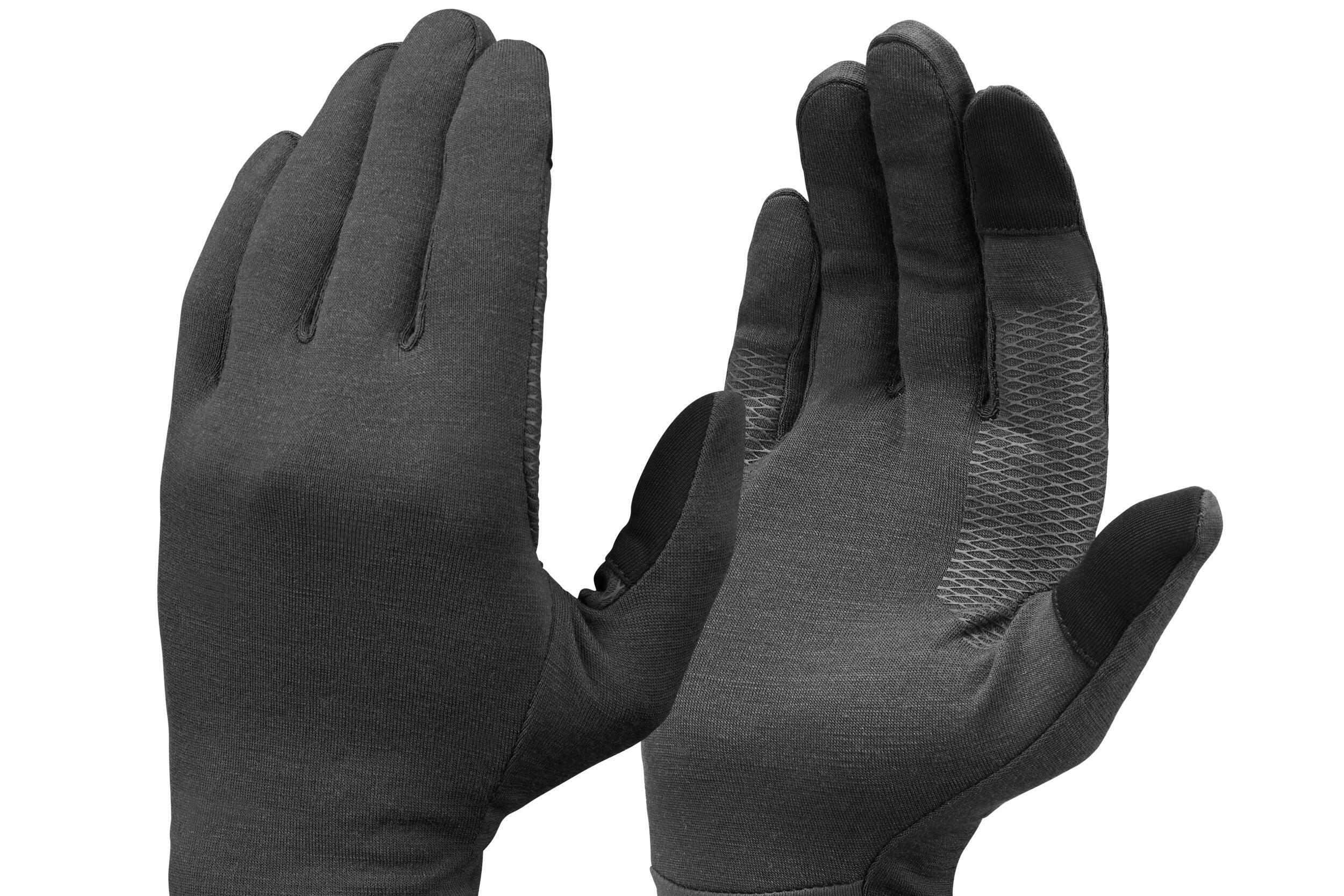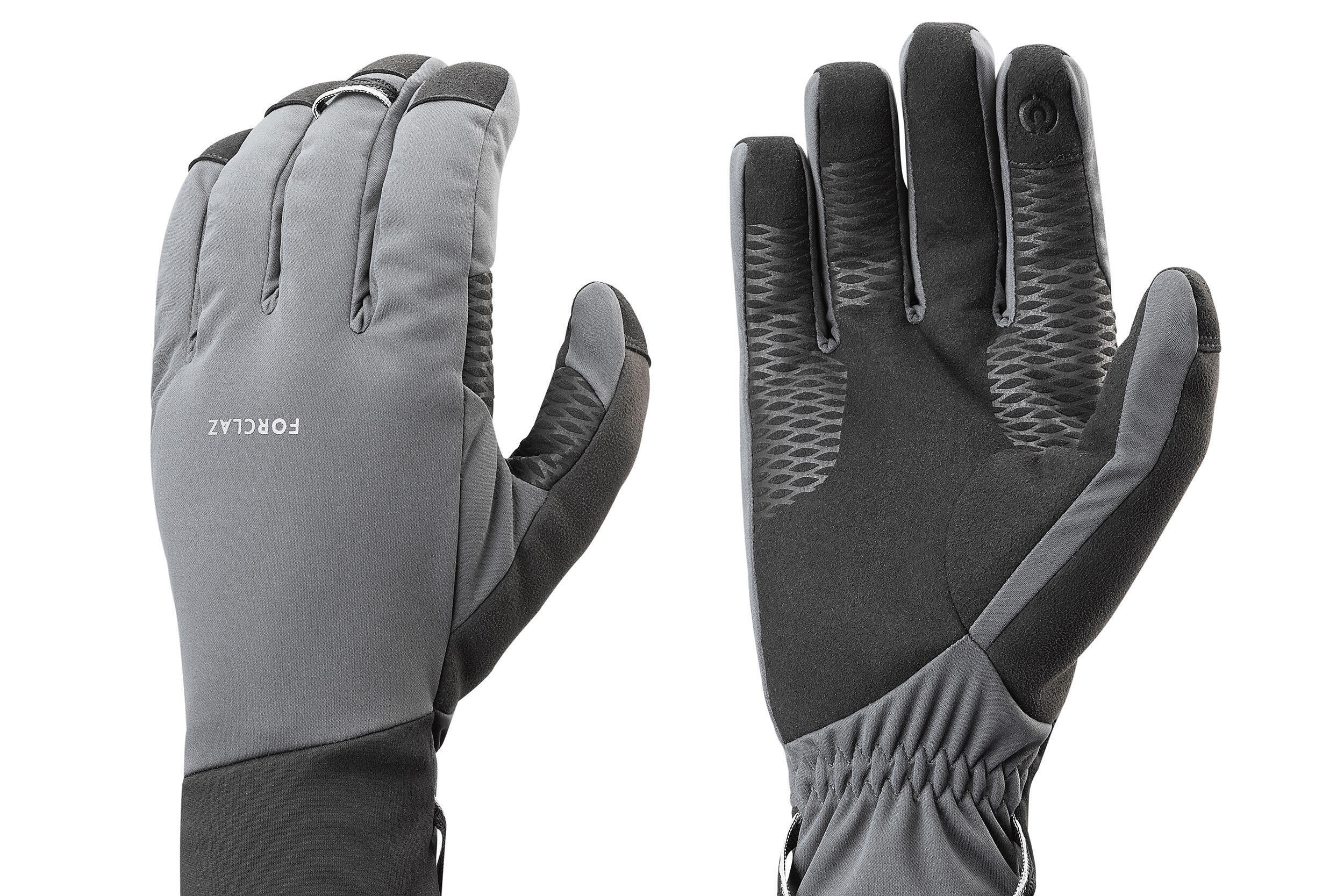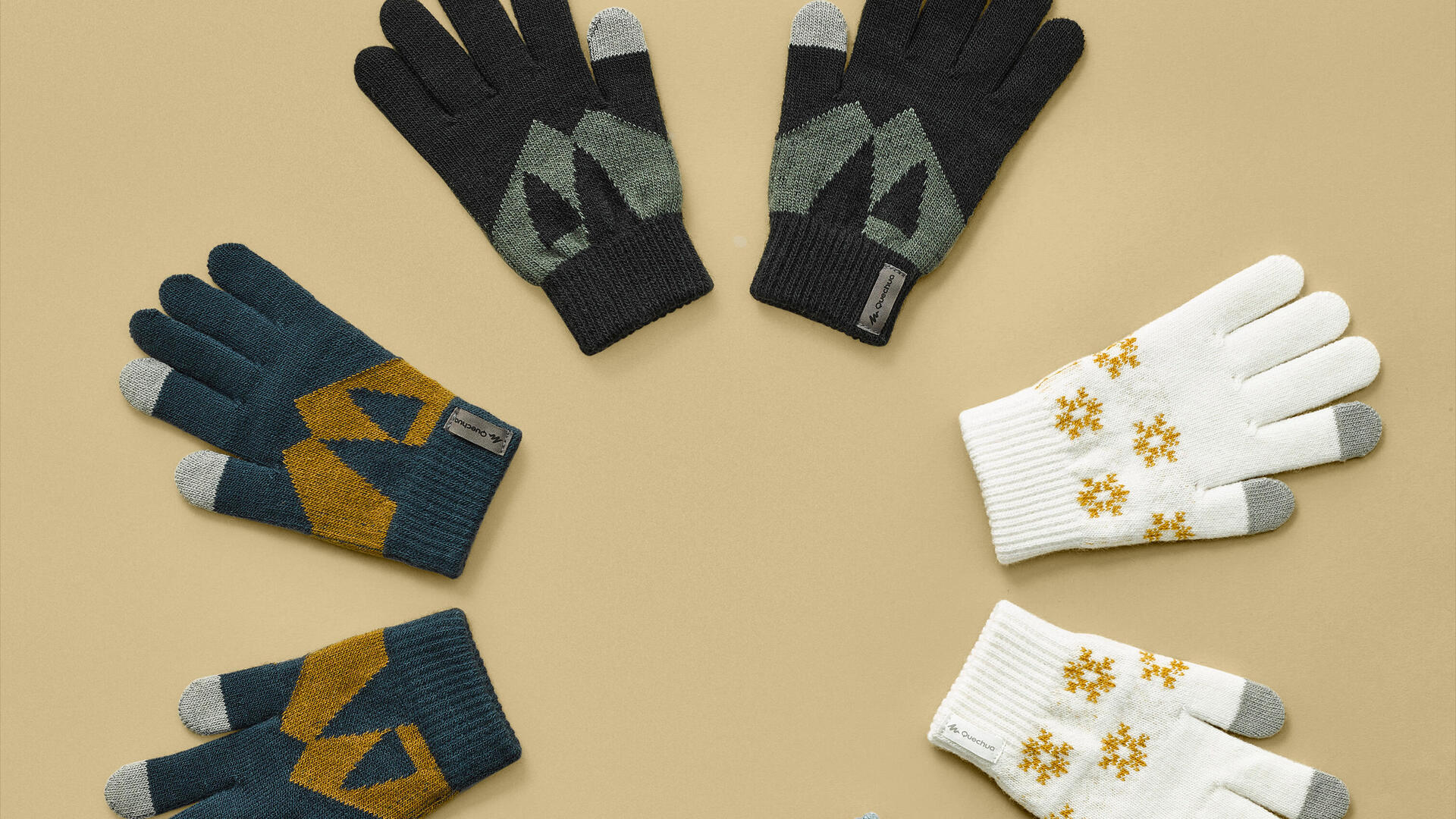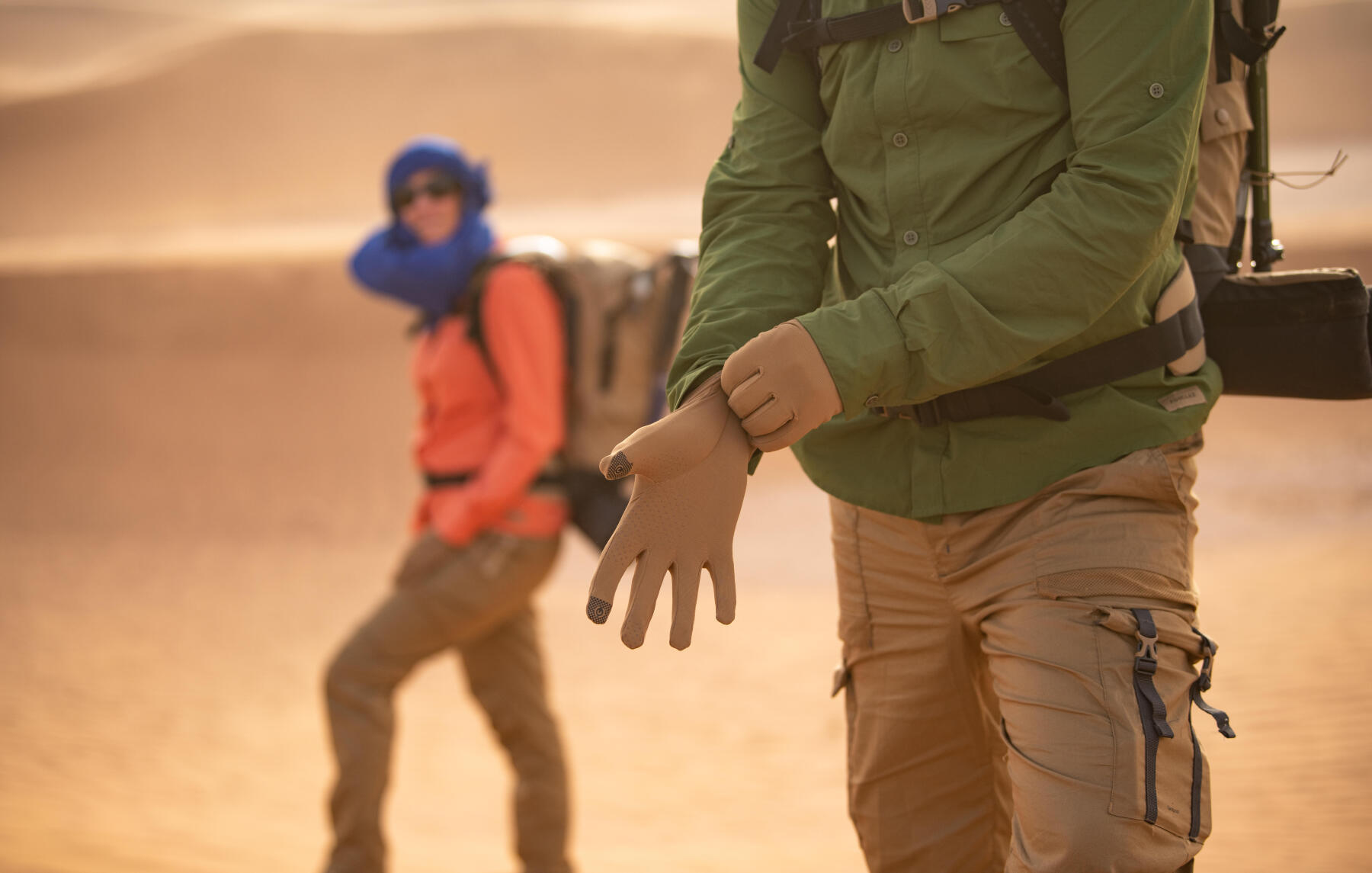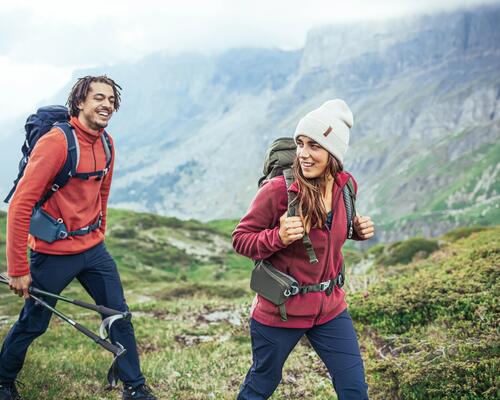1. Different types of gloves
Understanding the different layers:
It is important to distinguish between the different layers for your hands. We offer three types of gloves for your hikes.
Inner gloves: you should wear these underneath other gloves to provide extra warmth and not on their own. They are equivalent to the first layer of hiking clothing or a sleeping bag liner for bivouacking.
Gloves: these are worn over the inner gloves and should provide the necessary hand protection. They are equivalent to the second layer of hiking clothing.
Waterproof over-gloves: these are worn over the top of your gloves and are used in case of severe conditions. They are equivalent to the third layer of hiking clothing.


